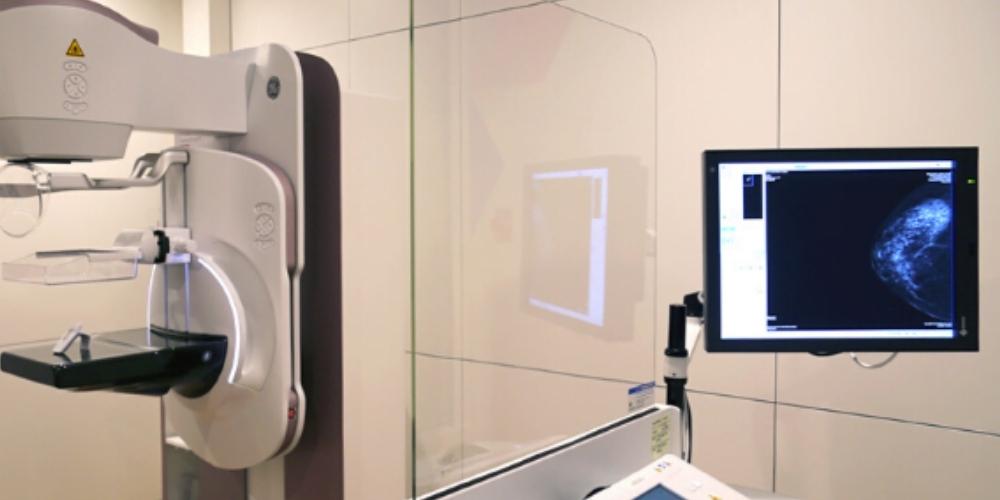Following the potent effect of the COVID-19 pandemic on imaging volume, mammography services have been on the rise once more in the United States. Imaging services took a nearly 70 percent hit from the pandemic when most of the country shut down and several states suspended healthcare services considered to be non-essential.
Although imaging has resumed, mammography services will not look the same as they did pre-pandemic. This goes for several healthcare services, since practitioners and infection preventionists are looking into new ways to operate while increasing patient safety and reducing the risk of infection.
The process of reopening will look different for each practice, depending on their location and local infection rate, as well as their size. Industry leaders and organizations have been working to develop a set of best practices designed to increase patient safety during mammography services.

The suspension of mammography services in many states during the pandemic has translated to a sudden surge of exams. Imaging practitioners must ensure that they have tailored plans in place to safely process patients, while considering the unique needs of their practice. Monica Saini, MD, chief medical officer of Volpara Solutions, echoed these concerns, “During this unprecedented time, we know that nothing is as it used to be. Facilities that have seen limited scheduling and significant drops in patient volume must now prepare for higher-than-normal volumes to resolve backlog.”
Volpara Solutions, a breast imaging analytics company, reported on June 9th that more than 78 percent of imaging practices and hospitals that conduct mammography exams were already operating within 10 percent of their pre-pandemic volume. To calculate this number, the company analyzed 20 million anonymized mammography images contained in their database.
The sudden reopening of practices across the country led the Society of Breast Imaging (SBI) to publish safety guidelines. As patient safety remains a top concern in these settings, the SBI guidelines work to balance safe patient processing with efficient backlog management.
Related content: The Process of Infection Prevention and Control for Imaging Facilities
SBI officials say that incorporating these recommendations into their reopening plans can assist imaging professionals in their efforts to reduce the risk of COVID-19 exposure.
1. Screen patients
The SBI recommends that patients be screened when they re-schedule their appointment and screened again when they arrive to the facility prior to entering. Staff should ask specific questions about potential COVID-19 exposure or symptoms of infection, such as shortness of breath, fever, fatigue, or cough. Only patients who do not show any signs and symptoms of infection and who pass the screening process should be permitted inside.
2. Reduce patient density
The screening process should be designed to keep facilities as free of infection as possible; however, staff should ensure that they measure and control the number of patients in their facility. Patient numbers can be controlled by either reducing the number of appointments offered or by spreading them further apart. When the risk of recurrent outbreak has sufficiently decreased in a practice’s local area, then staff can consider returning to pre-pandemic scheduling protocols.
3. Maintain social distancing
Practices should ensure that the design of their facilities has been adjusted to meet the needs of social distancing. For example, chairs in waiting rooms should be spaced at least 6 feet apart. Any other feasible modifications which reduce the risk of COVID-19 transmission should be implemented. Staff should also seek to simplify the registration, check-in, and check-out processes to reduce interactions and the amount of time patients spend in the office.
4. Monitor staff
Staff should be required to wear masks at all times when in the facility. The needs of each procedure should be analyzed, and the number of staff involved limited to those who are deemed necessary. Doing so limits potential exposure to COVID-19 for both patients and staff.
5. Clean and disinfect surfaces
Practices should ensure that staff are informed on the importance and role of cleaning and disinfecting surfaces and equipment. Facilities should have an infection control protocol in place that outlines the procedures of cleaning imaging equipment after use as well as disinfecting equipment with an EPA-registered disinfectant spray or wipe.
Imaging facilities should have protocols that target each step of the process of infection control to reduce the risk of healthcare-associated infections. Combining these best practices will facilitate a safer re-opening for both patients and providers.







